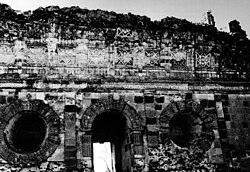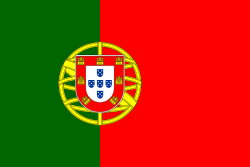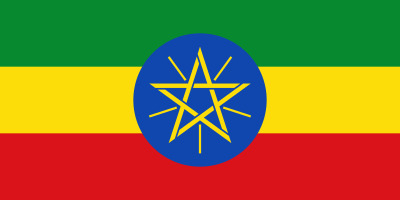Abissinia, doue sono le Fonti del Nilo descritta secondo le relationi de P.P. Mendez, Almeida, Pais, Lobo, e Lodulfo del P. M. Coronelli M.C. Cosmografo della Seren. Rep. di Ventia…
Größe:
5000 x 3590 Pixel (4567976 Bytes)
Beschreibung:
This is Coronelli's important 1690 map of Ethiopia (Abyssinia) showing the source of the Blue Nile. This map, focusing on Lake Tana (Tzana Dembea) covers the Ethiopian highlands from Derbeta on the Red Sea south as far as the tribal kingdoms of Sugame, Bahargamo and Gumar, all of which are located in modern southern Ethiopia. Europeans, Coronelli included, had a great interest in this region not only because of common conjecture regarding the source of the Nile, but also as a potential site of the Kingdom of Prester John. Though often underappreciated by historians, this is a highly significant map in the development of African cartography and, from the early 18th century on, most cartographers followed its example with regard to this important region - one of the few parts of sub-Saharan Africa to be accurately represented on maps prior to the late 19th century. Coronelli claims that this is the first map to accurately depict the sources of the Nile and, at least as regards the Blue Nile, we see no reason to dispute his claim. The cartography here is based upon the travels of Portuguese Jesuits Manuel de Almeida, Affonso Mendez, Pedro Páez, and Jerónimo Lobo, who traveled throughout Abyssinia in the mid 16th century. Coronelli correctly recognizes the importance of Lake Tana (Tzana Dembea) as well as the curious turn in the river that actually causes the Blue Nile to start it course as a southerly flowing river. The actual fonts of the Nile itself appear to the southwest of Lake Tana. The Falls of the Blue Nile, now a popular tourist destination in Ethiopia, are noted just south of the Lake. In the upper right quadrant Coronelli contrasts his perspective on the region with the traditional Ptolemaic representation of the Nile River stemming from two great lakes south of the Equator. Ironically, both perspectives are somewhat correct. Coronelli's representation of Abysinnia is highly accurate with regard to the course of the Blue Nile and its sources. On the other hand, along with the Ptolemaic theory, Coronelli seems to ignore the entire White Nile which meanders into non-existence in the extreme left hand quadrants of the map. The Ptolemaic perspective depicted on the upper right, though it is based on speculative accounts dating to antiquity, actually offers a fairly accurate representation of the White Nile's course northward from Lake Victoria, which is in fact located just below the Equator. Coronelli's map also offers much of interest beyond its intended purpose - that is to show the course of the Nile. A number of the earliest Ethiopian towns, cities, monasteriesc,and kingdoms, many of which still exist, are in evidence. These include Axum, Asmara, Gojiam, di Cafate (Kaffa), di Ganz , di Dembea (north of Lake Tana), Tigre, di Amhara (welo), Ifat, Guraghe, Damot, Balli, Dawaro, Sugamo (Sidamo?), Angot, Bagemder and Midrabahr ( Bahrmedr), among others. Curiously the map does not name the early Abyssinian capital city of Gondar, though the tent encampment of the King is roughly identified in the same location. A decorative title cartouche appears on the lower right quadrant. Another cartouche, showing a no less than six distance scales adorns the lower left.
Kommentar zur Lizenz:
|
Dies ist eine originalgetreue fotografische Reproduktion eines zweidimensionalen Kunstwerks. Das Kunstwerk an sich ist aus dem folgenden Grund gemeinfrei:
Nach offizieller Ansicht der Wikimedia Foundation sind originalgetreue Reproduktionen zweidimensionaler gemeinfreier Werke gemeinfrei. Diese fotografische Reproduktion wird daher auch als gemeinfrei in den Vereinigten Staaten angesehen. Die Verwendung dieser Werke kann in anderen Rechtssystemen verboten oder nur eingeschränkt erlaubt sein. Zu Details siehe Reuse of PD-Art photographs. |
Credit:
Diese Datei wurde Wikimedia Commons freundlicherweise von
Geographicus Rare Antique Maps
, einem Fachhändler für
edle und seltene antiquarische Kartographie und historische Karten des 15. bis 19. Jahrhunderts, im Rahmen eines
Kooperationsprojektes zur Verfügung gestellt.
Weitere Informationen zur Lizenz des Bildes finden Sie hier. Letzte Aktualisierung: Fri, 01 Mar 2024 23:20:12 GMT
Relevante Bilder
Relevante Artikel
Äthiopisch-portugiesische Beziehungen
Die äthiopisch-portugiesischen Beziehungen beschreiben das zwischenstaatliche Verhältnis zwischen Äthiopien und Portugal. Die Länder unterhalten seit 1959 direkte diplomatische Beziehungen.
.. weiterlesen
Königreich Kaffa
Das Königreich Kaffa bestand etwa vom Ende des 14. Jahrhunderts bis zur Eroberung durch den äthiopischen Kaiser Menelik II. 1897 und lag im Gebiet der heutigen äthiopischen Region Kaffa im Südwesten des Abessinischen Hochlandes. Bewohnt wurde das Königreich vom Volk der Kaffa oder Kefitsho. Hauptstadt war das südlich des Gojeb gelegene Bonga, später auch Anderaccha. Das Königreich Kaffa wird als Ursprungsort des Arabica-Kaffees betrachtet. Die Bezeichnung des Kaffees in zahlreichen Sprachen wird auf arabisch qahwa zurückgeführt, soll aber der Legende nach auf den Namen des Königreichs zurückgehen.
.. weiterlesen














